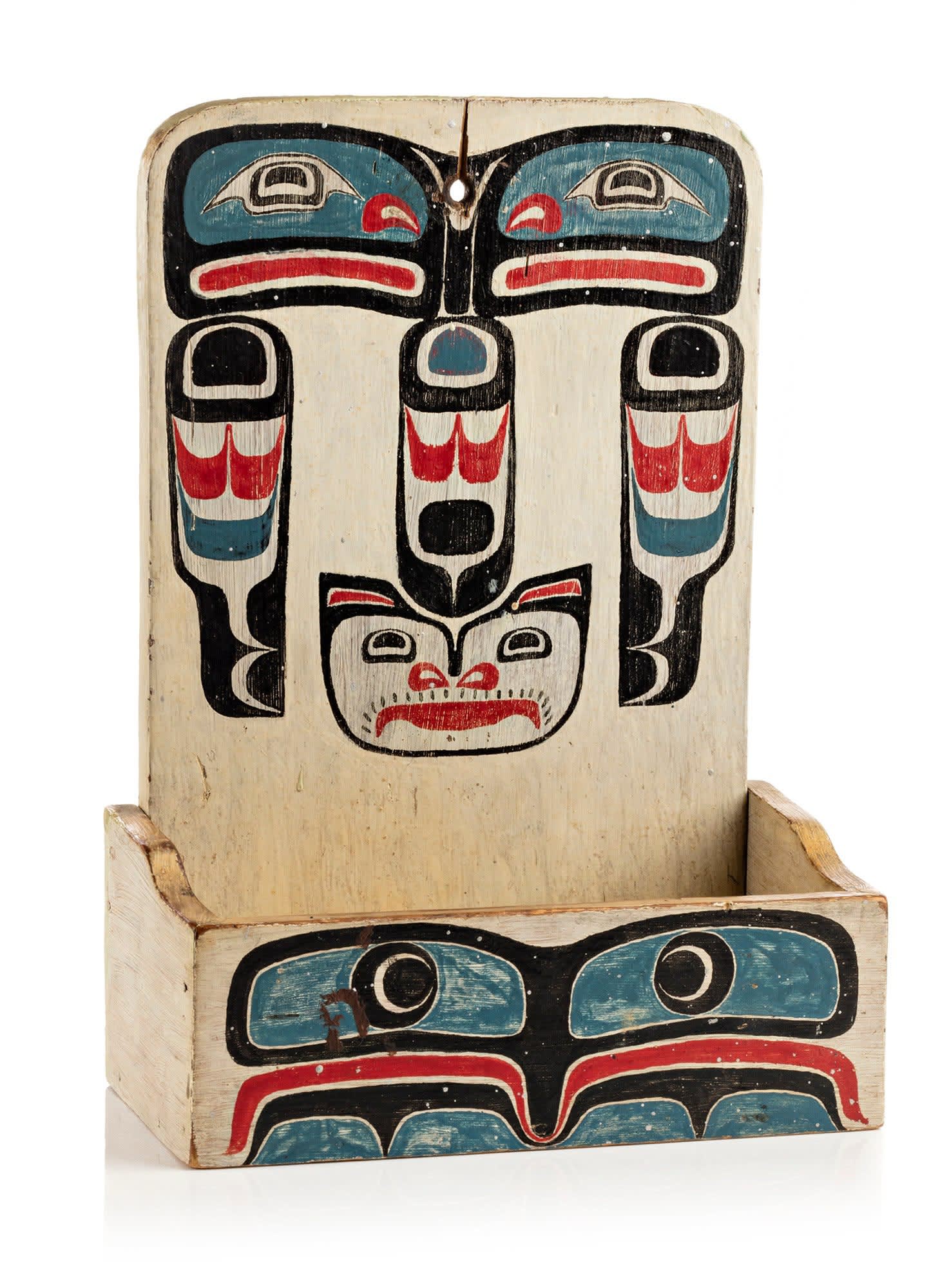An arguably defining feature of Northwest Coast art is the manner in which virtually every object – from everyday objects to ceremonial belongings – is decorated and embellished, either through sculptural features or expansive two-dimensional painting. Often both. In the late nineteenth and early twentieth centuries, this same design sensibility was transferred over to objects in the made-for-market art trade by Northwest Coast artists who created indigenized versions of Euro-American household items. By 1900, napkin rings, spoons and forks, covered compotes, pipes, chairs, baby cribs, and canes elaborated with painted designs and carving filled the shelves of curio shops in Seattle, Sitka, and Victoria. Notable artists producing these kinds of objects during this period include Haida artist Charles Edenshaw (1839-1920), Tsimshian carver Samuel Elwitt (1834-1919), Tlingit artist Rudolph Walton (1867-1951), and Kwakwaka'wakw artist Willie Seaweed (ca. 1873-1967).

Lot 144
WILLIE SEAWEED (HIAMAS) (c. 1873-1967) KWAKWA̱KA̱ʼWAKW
Painted Candle Box, c. 1940s
soft wood and acrylic paint, 8.5 x 6 x 3.5 in (21.6 x 15.2 x 8.9 cm)
ESTIMATE: $3,000 — $5,000
This diminutive candle box by Willie Seaweed is a fine example of an elaborated household item and packs a lot of Seaweed’s aesthetic sensibilities as an artist into a smaller object. Featuring a bilaterally symmetrical whale form with a frontally facing eagle design, it demonstrates a number of Seaweed’s diagnostic design elements, such as ovoids with angular or pinched bottom corners in the eyes of the whale and its tail and the perfectly circular eyes of the eagle being constructed of three eccentric, nested circles (Holm 1983, 35-37). So prevalent were these two artistic approaches in Seaweed’s creations that art historian Bill Holm (1925-2020) described them as being almost signature-like in terms of identification (ibid.). This candle box is also painted with a white ground, another recurring feature of Seaweed’s work that influenced other artists from his region and became a hallmark of the Blunden Harbour/Smith Inlet style of Kwakwaka'wakw art.
In summation, as an earlier object that adapts Indigenous design elements onto a Western household item, this candle box represents an important, if often overlooked, category of artwork from the 20th century history of Northwest Coast art.
Holm, Bill, Smoky-Top: The Art and Times of Willie Seaweed, (Vancouver: Douglas & McIntyre, 1983).
Christopher W. Smith, originally from Alaska, is a Vancouver-based writer and scholar with over twenty years of research experience. His work primarily concerns the collection, circulation, and representation of 19th and 20th century Alaska Native and Northwest Coast objects in museums and the ethnographic art market. He is currently a doctoral candidate in Museum Anthropology at the University of British Columbia.
